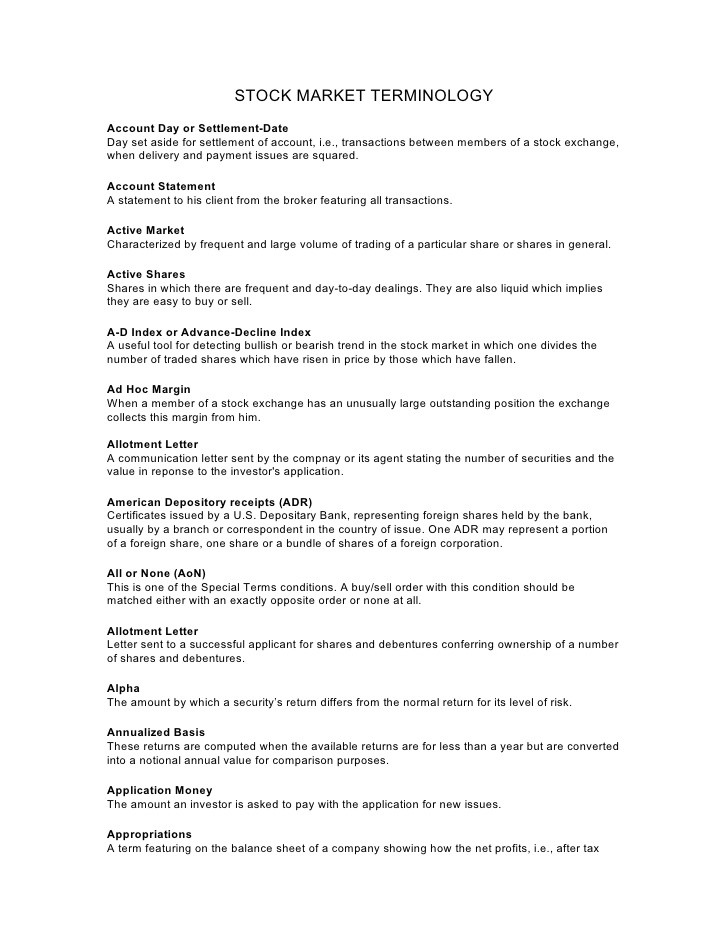Turnover Ratio (Stock market) Definition Online Encyclopedia
Post on: 16 Март, 2015 No Comment

A good turnover ratio is not as cut and dry as having a higher ratio than another company. Industry. relative performance. and credit lending terms all play a part. It is essential to compare apples with apples; meaning, measure the A/R turnover ratio against the industry average.
This indicator is not as important as some investor s might think.
A measure of a fund ‘s trading activity, computed by dividing the lesser of purchases or sales (excluding all securities with maturities of less than one year) by average monthly asset s.
A high turnover ratio means more buying and selling throughout the year. A ratio of 100 means they have turned over the entire portfolio. That adds to the cost of the fund and it’s not picked up in the expense ratio.
This ratio indicates how efficiently a company set inventarisnya, namely by showing how many times turn over inventory for one year. This type of ratio is very dependent on the type of industry where the company is located.
The asset turnover ratio of a company throws light into an important aspect. How much asset s does the company need to generate the required volume of sales. If the company is capable of generating sales by investing heavily in asset s, it could mean that the company is capital intensive in nature.
Inventory Turnover Ratio — A ratio that measures how effectively a firm is putting its inventory resources to work generating sales. A low turnover ratio may indicate that a firm is carry ing obsolete products in inventory and/or that its investment in inventory is excessive.
An accounting measure used to quantify a firm’s effectiveness in extending credit as well as collecting debts. The receivables turnover ratio is an activity ratio. measuring how efficiently a firm uses its asset s.
Formula.
Fixed annuities
Contract s in which an insurance company or issuing financial institution pays a fixed dollar amount of money per period.
Receivables Turnover Ratio. measures how many times accounts receivable have been collected in a given period. Receivables turnover is calculated by taking the last 12 months of sales and dividing by the average receivables from the latest two quarters.
Most index fund s have turnover ratio s of less than 5%, indicating that the total dollar volume of trading was less than 5% of the market value s of the funds. This results in transaction s costs at these funds of 0.20%-0.50%, which is less than one third the costs at most actively managed fund s.
Another number to check is the turnover ratio. which reflects how actively a fund ‘s manager s are buying and selling stocks. In general, the lower the turnover ratio. the better.
A helpful number to look at is the inventory -turnover ratio. It’s annual sales divided by inventory and it reflects the number of times inventory is used and replaced throughout a year. Low inventory turnover is a sign of inefficient inventory management.
A turnover ratio of 25 % means that the value of trades represented one-fourth of the asset s of the fund. Finance: The number of times a given asset. such as inventory. is replaced during the accounting period. usually a year.
The annual turnover ratio is determined by dividing the dollar transaction value of the traded shares by the total shares in the portfolio for the year in question.
Avoid Mutual Fund s with High Turnover Ratio s
Look for an Experienced, Disciplined Management Team
Find a Philosophy that Agrees with Your Own when Selecting a Mutual Fund
The Case for Index Fund s
efficiency, activity or turnover ratio s provide information about management’s ability to control expenses and to earn a return on the resources committed to the business.
How to Measure Investment Turnover Ratio
How to Invest Money With Investment Bank s
Can 401(k) Investment Losses Be Deducted on IRS Form 1040?














